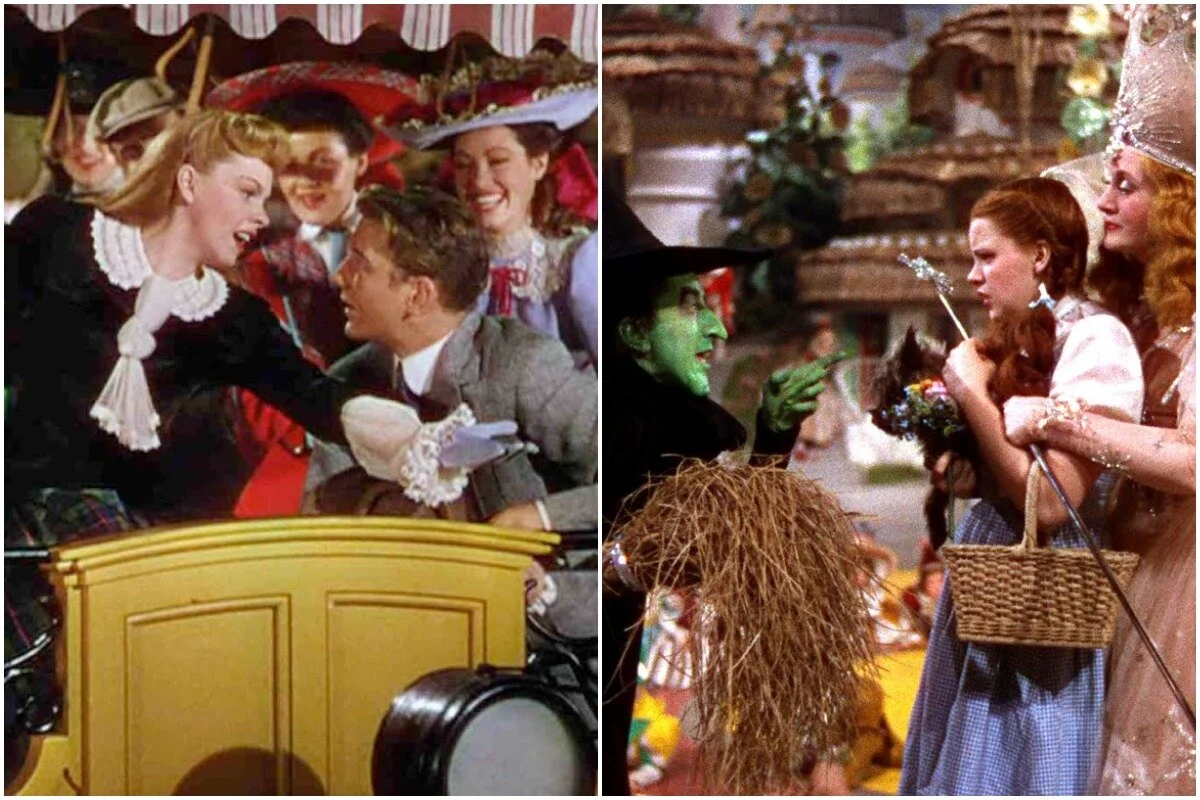Double Feature Date: Two Movies to Get You Saying “There’s No Place Like Home”
/This post contains affiliate links in which we receive a commission for items you buy at no extra cost to you.
One way Matthew and I like to switch up our movie watching is to make it a “double feature”—either to watch two movies back-to-back or on two consecutive nights. And not just any two movies. I get great pleasure in finding movies that compliment each other, either in subject matter, genre, casting, or some other way.
This week we are featuring two classic Judy Garland movies that have one message in common: “stay home!”
As I write this, we are in the midst of the coronavirus quarantine and starting to get restless. I thought that these two movies seemed appropriate right now in more than one way. First, they both are cheery, fun musicals. When feeling stressed and down, this type of heart-warming movie makes me feel better, so I figured it would do the same for you too. Second, both of these movies were released in turbulent times when society urged people to stay home and focus on family, times strangely like ours. There’s something comforting in knowing that we aren’t the first to go through hard times, and we won’t be the last.
When you watch these films, talk about the message they share, the reception they got when they were released, and what we can get from these movies even now. But most of all, have fun!
(Love seeing double? Check out our double feature date for The Parent Trap)
The Wizard of Oz (1939)
The Wizard of Oz (1939) is such a classic and has become such a staple in popular culture that we hardly give it a second thought. Put yourself in the era in which it was released, however, and you might understand better why the movie emphasizes “there’s no place like home,” even if that home is dried up, sepia-toned Kansas.
In the film, a young woman from Kansas named Dorothy, played by Judy Garland, dreams of escaping to a wonderful land far away. When a tornado hits, she ends up magically transported to such a land, called Oz. Once there, however, Dorothy only desires to get back home and spends the majority of the movie trying to figure out how. How does she do it in the end? She has a change of heart.
At the end of the American dust bowl and great depression, this was no foreign concept. Rural American farmers, whose land had been decimated by drought, were fleeing to larger cities, desperate to make money to support their families. By 1939, the U.S. government was taking drastic measures to get farmers back to their land and farming again.
Dorothy’s return home, and the sentiment surrounding it, aimed to inspire fellow Americans to return home and plant their hearts there.
Rent or Buy The Wizard of Oz on Amazon.
Meet Me in St. Louis (1944)
It’s no coincidence that Judy Garland was cast in Meet Me in St. Louis (1944) five years later. The movie features an upper middle class family living in St. Louis in 1904, the year of the World’s Fair. When the patriarch gets a job in New York, the family faces leaving the home they love.
At the height of World War II, with many men away from home, with many women entering the workforce, and with families being separated or displaced, a nostalgic Americana film was just what people wanted to see. And its message, that home and family triumph over big-city aspirations, held strong through the end of the war into the 1950’s, when the traditional nuclear family was seen as the crux of society.
At the end of the movie (spoiler alert), the family ends up staying in St. Louis and attending the World’s Fair. Judy Garland exclaims in the final line of the film, akin to her final line in The Wizard of Oz, “I can’t believe it. Right here where we live! Right here in St. Louis.”















What is more perfect than a double feature about twins? This dinner and a movie shake-up will have you seeing quadruple. Watch The Parent Trap (1961) and make it a double feature with The Parent Trap (1998). Afterwards, compare them with our Double Feature Game.